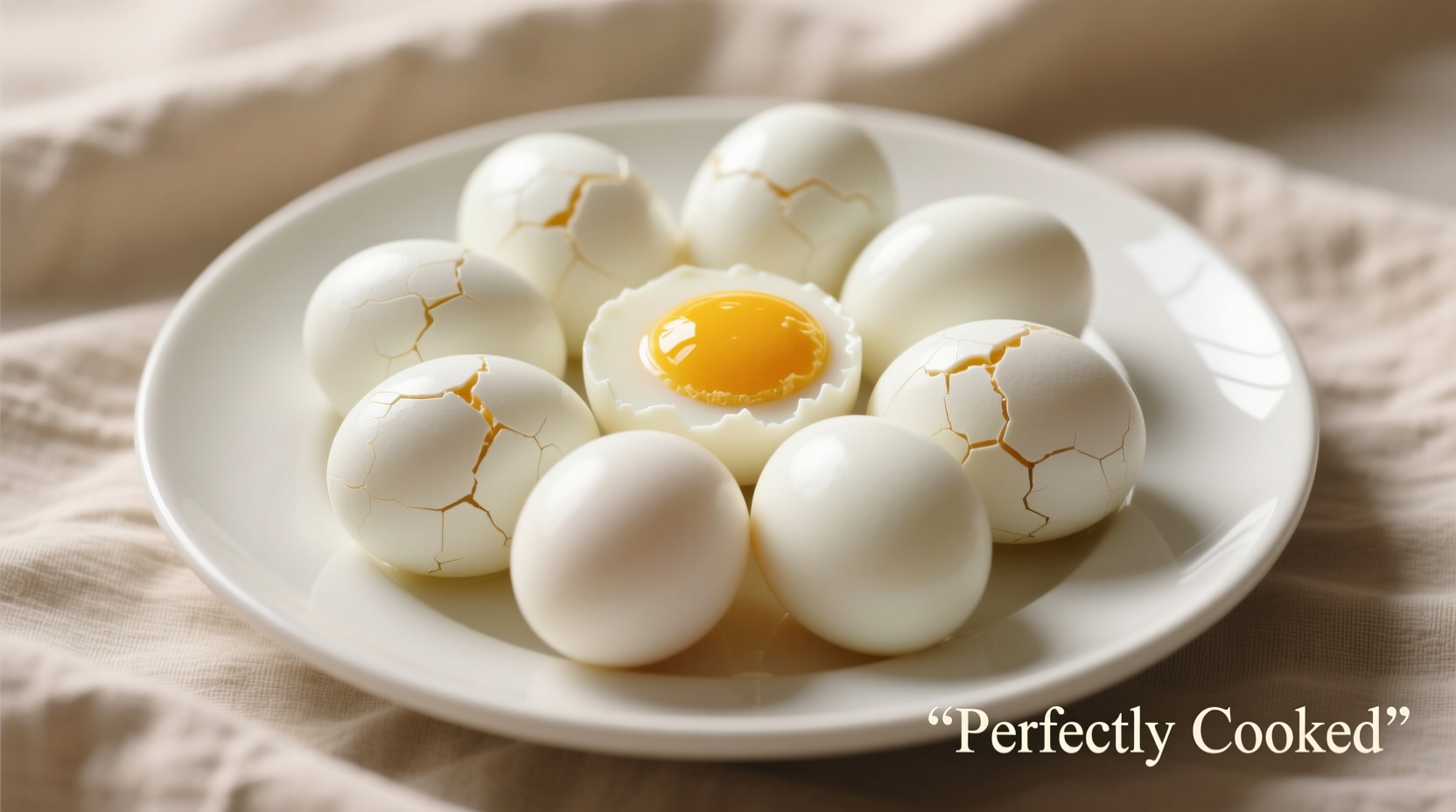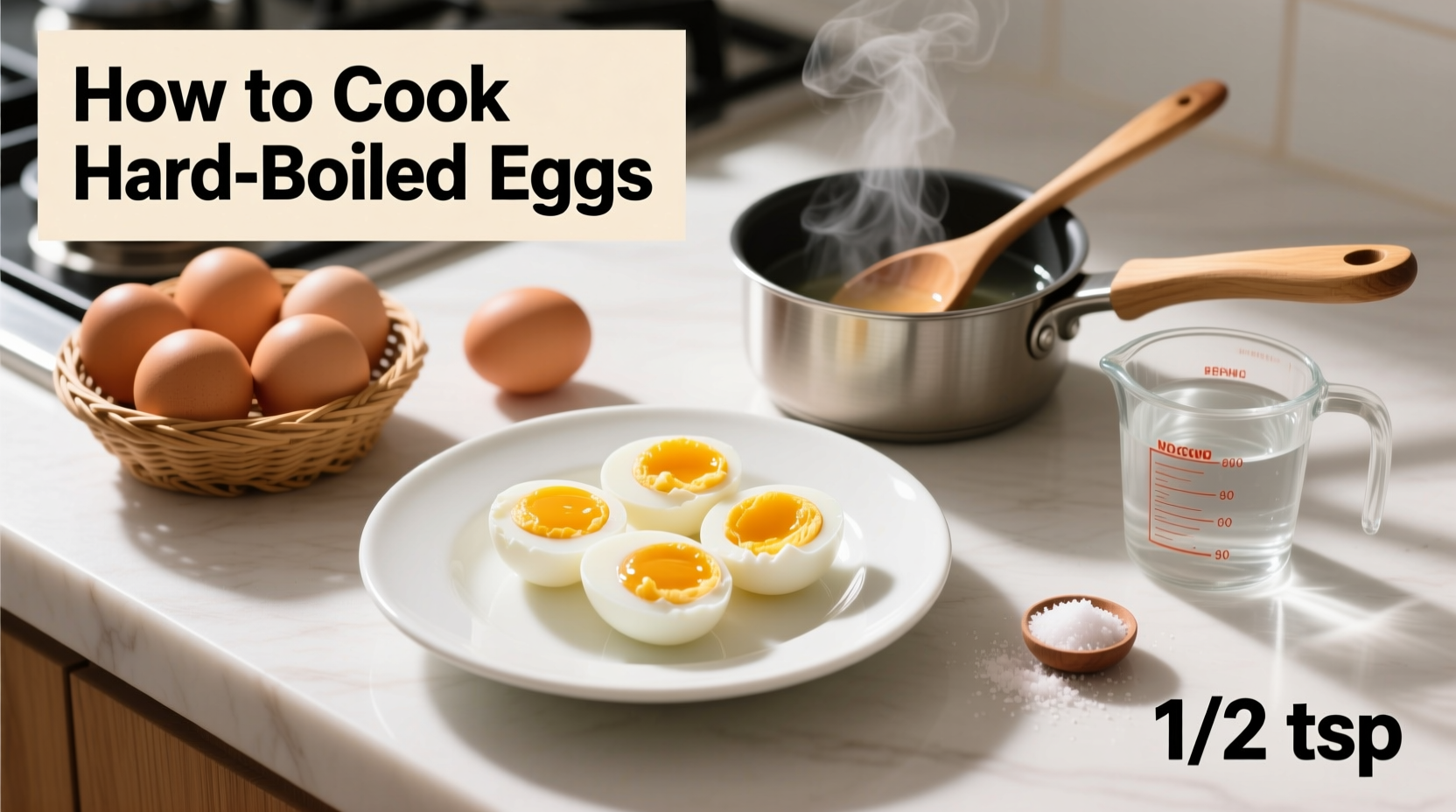The Science Behind Perfect Hard Boiled Eggs
Many home cooks struggle with hard boiled eggs that crack during cooking, develop unappetizing green rings around the yolks, or stubbornly refuse to peel cleanly. The secret to consistent results lies in understanding egg chemistry and precise timing. When heated, egg proteins denature and coagulate in stages - starting with the whites at 140°F (60°C) and finishing with yolks at 158°F (70°C). Overcooking causes sulfur compounds in the whites to react with iron in yolks, creating that green-gray ring.
Why Traditional Boiling Methods Fail
Most people make these critical mistakes when boiling eggs:
| Common Method | Problem | Scientific Explanation |
|---|---|---|
| Starting with boiling water | Frequent cracking | Sudden temperature shock causes air pocket expansion |
| Boiling 15+ minutes | Green yolks, rubbery texture | Sulfur-iron reaction at prolonged high heat |
| Skipping ice bath | Difficulty peeling | Membrane adheres to shell without rapid cooling |
Your Foolproof Hard Boiled Egg Timeline
Follow this precise cooking sequence for restaurant-quality results:
- Prep (2 minutes): Arrange eggs in single layer in saucepan, cover with 1 inch cold water
- Heating (8-10 minutes): Bring to rolling boil over medium-high heat
- Cooking (10-12 minutes): Remove from heat, cover, set timer immediately
- Cooling (15 minutes): Transfer to ice bath using slotted spoon
- Peeling (1 minute): Gently tap, roll, and peel under cold running water

Critical Success Factors
Three often-overlooked elements determine your success:
Egg Age Matters
Farm-fresh eggs (less than 7 days old) contain more carbon dioxide, creating stronger membrane adhesion. For easiest peeling, use eggs 7-14 days old. The American Egg Board confirms older eggs have slightly higher pH, weakening the membrane-shell bond.
Altitude Adjustments
At elevations above 3,000 feet, water boils at lower temperatures, requiring longer cooking times. Add 30 seconds per 1,000 feet of elevation to your sitting time. The USDA Food Safety and Inspection Service recommends this adjustment for proper egg coagulation.
The Ice Bath Imperative
Immediate cooling serves three critical functions:
- Stops residual cooking to prevent green yolks
- Causes egg contents to contract away from shell
- Creates air pocket for easier peeling
Advanced Techniques for Perfection
Professional chefs use these pro tips:
Vinegar vs. Salt Debate
Adding 1 tablespoon vinegar to cooking water helps coagulate whites if shells crack, but doesn't prevent cracking. Salt (1 teaspoon) raises water's boiling point slightly and may strengthen shell membranes. Research from the Journal of Food Science shows salt's primary benefit is flavor enhancement rather than structural improvement.
Storage Guidelines
Refrigerate unpeeled hard boiled eggs in airtight container for up to one week. The Food and Drug Administration advises against storing peeled eggs due to increased bacterial risk. For meal prep, leave eggs unpeeled until ready to eat.
Troubleshooting Common Problems
Solve these frequent issues with precision adjustments:
Cracked Shells During Cooking
Solution: Start with room-temperature eggs and add eggs to warm (not boiling) water. Pierce the air pocket end with an egg piercer to release expanding air gradually.
Green Ring Around Yolk
Solution: Reduce sitting time by 1-2 minutes and ensure immediate ice bath transfer. This harmless but unattractive discoloration occurs when iron and sulfur compounds react during prolonged heating.
Difficulty Peeling
Solution: Use older eggs (7-14 days) and ensure complete submersion in ice bath for full 15 minutes. Peel under cold running water to help separate membrane from shell.
When This Method Has Limitations
Our recommended technique works perfectly for standard large chicken eggs at sea level. For specialty eggs:
- Duck eggs: Require 3-5 minutes longer cooking due to thicker shells
- Quail eggs: Cook 2-3 minutes then ice bath (per American Egg Board guidelines)
- Very fresh farm eggs: May require vinegar in water to minimize cracking
Perfect Hard Boiled Eggs: Your Path to Culinary Success
Mastering this fundamental technique opens doors to deviled eggs, egg salad, and countless other dishes. By understanding the science behind egg protein coagulation and following our precise timing method, you'll achieve consistent results with smooth, bright yellow yolks and tender whites every time. Remember that perfect hard boiled eggs aren't about complicated equipment - they're about precise temperature control and timing. Keep this guide handy for your next batch, and you'll never struggle with rubbery yolks or shell-stuck eggs again.
How long should I boil eggs for hard boiled?
After bringing water to a rolling boil, remove from heat, cover, and let sit for 10-12 minutes. This gentle cooking method prevents overcooking while ensuring fully set yolks. Immediately transfer to an ice bath for 15 minutes for perfect results.
Why do my hard boiled eggs crack during cooking?
Cracking occurs due to rapid temperature change causing air pocket expansion. Prevent this by starting with room-temperature eggs, adding them to warm (not boiling) water, and piercing the air pocket end with an egg piercer before cooking.
How do I make hard boiled eggs peel easily?
Use eggs 7-14 days old, ensure immediate transfer to ice bath for 15 minutes, and peel under cold running water. Older eggs have higher pH which weakens the membrane-shell bond, making peeling significantly easier according to American Egg Board research.
Why do my hard boiled eggs have green rings around the yolks?
The green-gray ring forms when sulfur compounds in egg whites react with iron in yolks during prolonged heating. Prevent this by reducing sitting time by 1-2 minutes and ensuring immediate ice bath transfer to stop residual cooking.
How long do hard boiled eggs last in the refrigerator?
Unpeeled hard boiled eggs stay fresh for up to one week when stored in an airtight container in the refrigerator. The USDA Food Safety and Inspection Service recommends against storing peeled eggs due to increased risk of bacterial contamination.











 浙公网安备
33010002000092号
浙公网安备
33010002000092号 浙B2-20120091-4
浙B2-20120091-4